MediaTek Helio G99

MediaTek Helio G99: A Powerful Companion for Mid-Range Smartphones in 2025
Overview of Architecture, Performance, and Use Cases
Introduction
In the world of mobile processors, MediaTek continues to impress with its balance of price and capabilities. The Helio G99, introduced in 2022, remains relevant in 2025 due to its successful architecture and optimization. This chip has become the foundation for hundreds of smartphones priced between $200 and $300, offering stable performance without overspending. Let's explore what sets it apart in 2025 and who it’s suitable for.
1. Architecture and Process Technology: Efficiency at 6 nm
The Helio G99 is built on TSMC's 6-nanometer process technology, providing low power consumption (TDP — 5W) and moderate heating. Its CPU includes 8 cores:
- 2 high-performance Cortex-A76 cores clocked up to 2.2 GHz for resource-intensive tasks.
- 6 energy-efficient Cortex-A55 cores clocked up to 2.0 GHz for background processes.
The Mali-G57 MP2 GPU (2 cores) supports resolutions up to Full HD+ (1080p) and a refresh rate of 120 Hz. While it's not a top-tier graphics accelerator, it is optimized for mid-range gaming and a smooth interface.
Key Features:
- Support for LPDDR4X RAM (up to 2133 MHz) and UFS 2.2 storage.
- HyperEngine 3.0 Lite technology for enhanced gaming performance.
- Artificial Intelligence (APU 3.0) for photo processing and task automation.
2. Performance: Gaming, Multimedia, and Power Consumption
Benchmarks and Real-World Scenarios:
- Geekbench 6: 733 (Single-Core), 1994 (Multi-Core) — sufficient for fast app performance and multitasking.
- AnTuTu 10: 423,470 points — higher than Snapdragon 680 (~380,000), but lower than Snapdragon 778G (~540,000).
Gaming:
- Genshin Impact on medium settings (30 FPS), PUBG Mobile — up to 60 FPS in HD.
- In demanding games, frame rates may drop to 40 FPS, but scenarios such as COD Mobile or Honkai: Star Rail remain comfortable.
Multimedia:
- Supports cameras up to 108 MP and recording 4K@30 fps (H.265).
- 4K video is stable, but extended shooting may cause heating.
- Screen technologies: HDR10, adaptive synchronization.
Power Consumption:
- Thanks to the 6 nm process and core division, smartphones with the G99 last 1.5–2 days on a 5000 mAh battery.
- Fast charging (up to 33W) compensates for the lack of wireless charging in most models.
3. Integrated Modules: 4G, Wi-Fi 5, and GPS
The Helio G99 is aimed at markets where 5G is not yet dominant:
- 4G LTE Cat-13 modem (speed up to 600 Mbps).
- Wi-Fi 5 (802.11ac) and Bluetooth 5.2 with support for the LC3 audio codec.
- Navigation: GPS, GLONASS, Galileo, BeiDou.
What’s Missing:
- No 5G, Wi-Fi 6, or Bluetooth 5.3.
- Satellite communication (such as emergency SOS) is not supported.
4. Comparison with Competitors: Who Excels?
MediaTek Helio G99 vs Qualcomm Snapdragon 695:
- Snapdragon 695 (6 nm) includes 5G but lags in CPU performance (up to 2.2 GHz vs. 2.2 GHz for G99). The G99 offers more stability in gaming thanks to HyperEngine.
vs Samsung Exynos 1280:
- Exynos 1280 (5 nm) has better performance in AI tasks and supports 5G, but it is more expensive.
vs Previous Generations:
- A 25% improvement in energy efficiency compared to Helio G96 (12 nm).
Conclusion: The G99 is optimal for those who do not require 5G but value interface smoothness and battery life.
5. Use Cases: Who is Helio G99 Made For?
- Gaming: Suitable for casual games and medium settings in AAA titles. Ideal for teenagers and students.
- Everyday Tasks: Social media, streaming, office applications—everything runs smoothly without lag.
- Photo and Video: Night mode and portrait shots with background blur—at a decent level. 4K video is good for vlogging.
Examples of Smartphones in 2025:
- Xiaomi Redmi Note 13 ($250): 108 MP camera, AMOLED 90 Hz.
- Realme 10 Pro ($270): 67W charging, stereo speakers.
6. Pros and Cons
Strengths:
- Energy efficiency (5W TDP).
- Support for 108 MP cameras and 4K.
- Affordable device pricing.
Weaknesses:
- Lack of 5G support.
- Mali-G57 MP2 is weaker than Adreno 619 (Snapdragon 695).
- Wi-Fi 5 instead of Wi-Fi 6.
7. Tips for Choosing a Smartphone with Helio G99
1. Cooling: Look for models with graphite pads or liquid cooling (e.g., Poco X5).
2. Battery: At least 5000 mAh for long usage.
3. Display: AMOLED with a refresh rate of 90–120 Hz for smoothness.
4. Memory: Minimum 6 GB RAM + 128 GB UFS 2.2.
Typical Devices: Budget "flagships" from Xiaomi, Realme, Oppo.
8. Final Thoughts: Who is Helio G99 for?
This processor is the choice for those who:
- Are not ready to pay extra for 5G.
- Value battery life and interface smoothness.
- Play mobile games but not on the highest settings.
Main Benefits: Balanced performance, long battery life, and an attractive price. In 2025, the Helio G99 remains relevant for smartphones under $300, proving that "budget" does not mean "weak."
Basic
6x 2 GHz – Cortex-A55
GPU Specifications
Connectivity
Memory Specifications
Miscellaneous
Benchmarks
Phones with Helio G99




































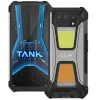
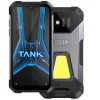




Tablets with Helio G99
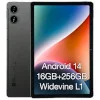




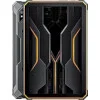









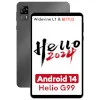












Comparison of Devices with Helio G99
Compared to Other SoC
Share in social media
Or Link To Us
<a href="https://cputronic.com/en/soc/mediatek-helio-g99" target="_blank">MediaTek Helio G99</a>